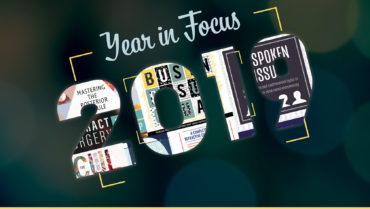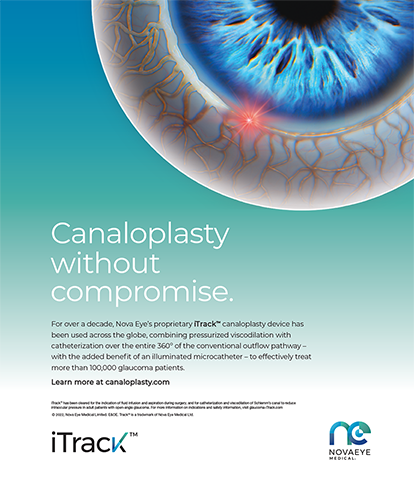
Just as smartphones have ignited massive changes in human interaction across the world, they have also had an impact on our practice of ophthalmology. Today, a variety of ophthalmic apps can provide us with a wealth of knowledge and information, essentially with a tap and a scroll of the screen.
A seemingly endless number of ophthalmology-specific apps are available on Apple’s App Store and on Google Play, but let’s take a closer look at the best apps across three categories: apps that you can use when you’re examining patients and documenting findings, apps that you can recommend to your patients, and apps that can help you in professional education and practice management.
THE TOPS IN THREE CATEGORIES
Apps to examine patients and document findings. One of the easiest apps for documentation of eye motility and strabismus is 9 Gaze (See Vision), which can be used to take photos of patients in the nine cardinal gazes. Use of this app is a quick and efficient way to document eye motility and strabismus. The app provides on-screen guidance for eye positioning and automatically creates a composite image of all nine gazes, which can be emailed and imported to the patient’s electronic health record. The images can be saved to the smartphone and uploaded to the patient’s chart.
Another useful app in the patient examination is Ullman Indirect (Michael Ullman), which essentially turns an iPhone into a fundus camera. There is a learning curve associated with use, but, once properly adjusted, it allows the user to control focus, exposure, and light intensity to capture high-quality fundus photos and videos. When the video function is used, still photos can be captured and exported. Videos and photos can also be rotated 180º for correct fundus orientation, and it can be used with a slit-lamp adapter.
With nearly 2.5 million downloads, one of the most popular apps among ophthalmologists is the Eye Handbook (Cloud Nine Development). This is not a new app, but it is worth mentioning because of its vast resources, including a near vision chart, Amsler grid test for macular degeneration, color vision testing, calculator, coding guide, videos, and references.
For more apps that are helpful during patient exams, see the accompanying sidebar.
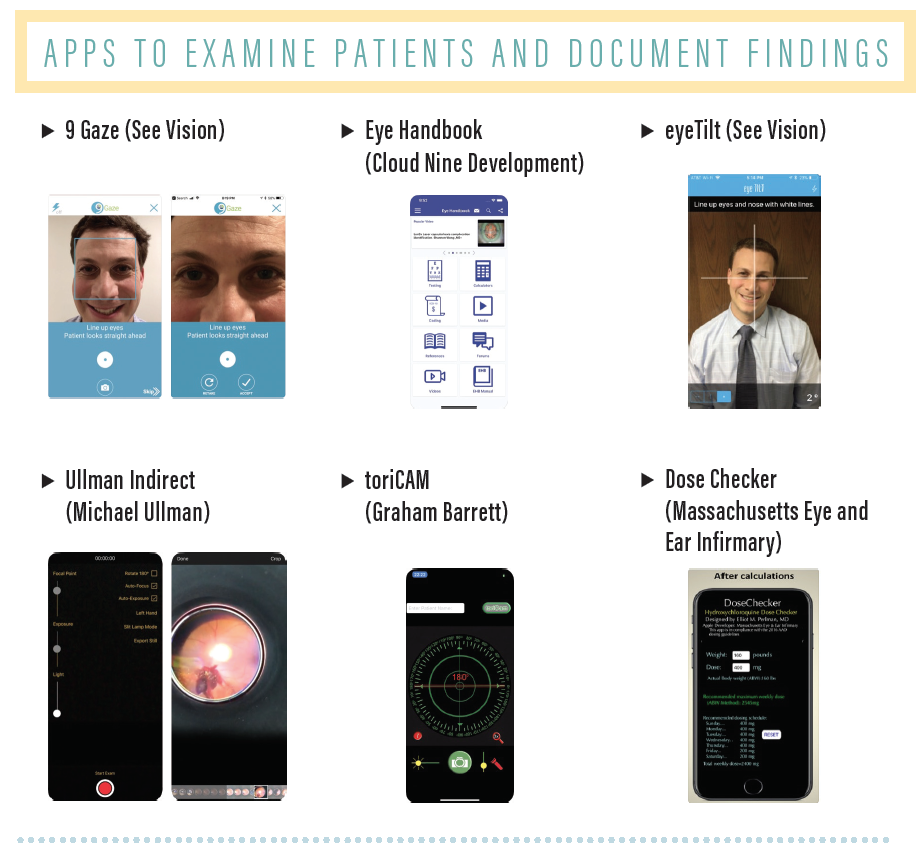
Apps to recommend to your patients. At the top of my list in this category is EyeDropAlarm (Kayur Shah), which is a simple patient reminder for eye drop application. Patients can add the names of their drops from a list of ophthalmic medications, indicate in which eye the drops should be instilled, and set how many times a day they want the alarms to go off. What is nice about this app is that the alarm does not go away until the person presses it.
For low-vision patients, there are two interesting and innovative apps that can make a world of difference: Be My Eyes (Be My Eyes) and Seeing AI (Microsoft). Be My Eyes connects low-vision patients with sighted volunteers. When patients need help identifying something around them, they can make a call to a volunteer; usually within 30 seconds the call is picked up, and a video connection is transmitted via the app so that the volunteer can serve as the caller’s eyes.
Seeing AI uses artificial intelligence (AI) to help low-vision patients identify the world around them via photographs. It can help identify nearby objects and people, and it can even be used to read text that is placed in front of the camera.
For more apps to recommend to your patients, see the accompanying sidebar.
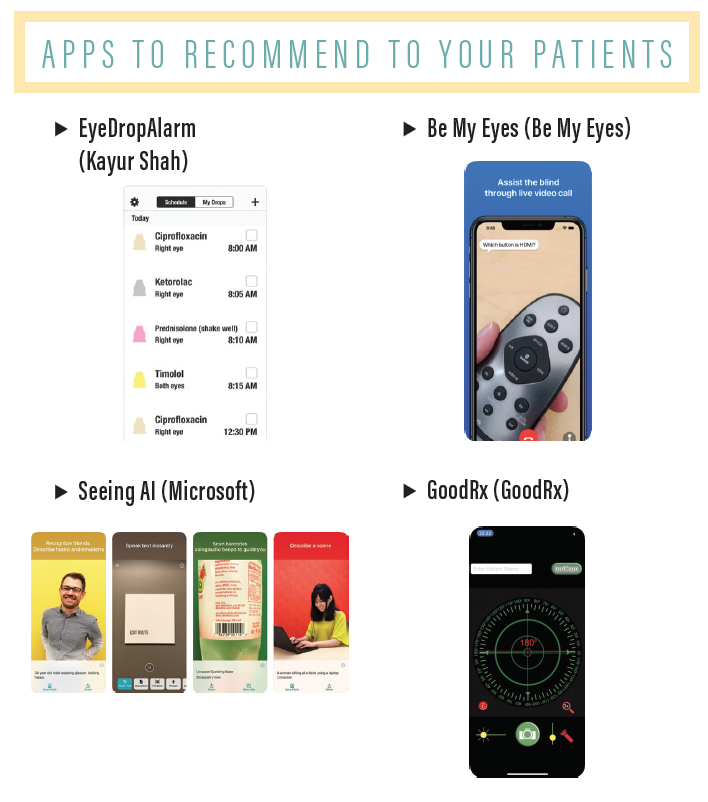
Apps to provide professional education and assist with practice management. The AAO’s new app, AAO Ophthalmic Education, gathers news articles, videos, and quizzes into one platform. It also includes access to EyeWiki, an online encyclopedia of eye conditions and diseases that includes discussions of pathophysiology, management, diagnosis, and treatment.
The Wills Eye Manual (Skyscape Medpresso) app is indispensable for guidance in treating ocular disorders. It includes data from major clinical trials; clinical recommendations for evaluation, diagnosis, management, and treatment of ocular conditions and diseases; and videos with step-by-step narration of common procedures. It can also be used for recording rich-text notes; annotations with scribble, doodle, or text; and voice memos. Approximately 10% of the content is available on the app without a subscription.
Eyetube (Fyra Digital)—sister property to CRST—and Youtube: Watch, Listen, Stream (Google) are excellent resources for surgical videos. Eyetube houses an extensive archive of narrated ophthalmology videos across all ophthalmic specialties. It also offers breaking news video coverage of major ophthalmology meetings and conventions worldwide.
For more professional education and practice management–related apps, see the accompanying sidebar.
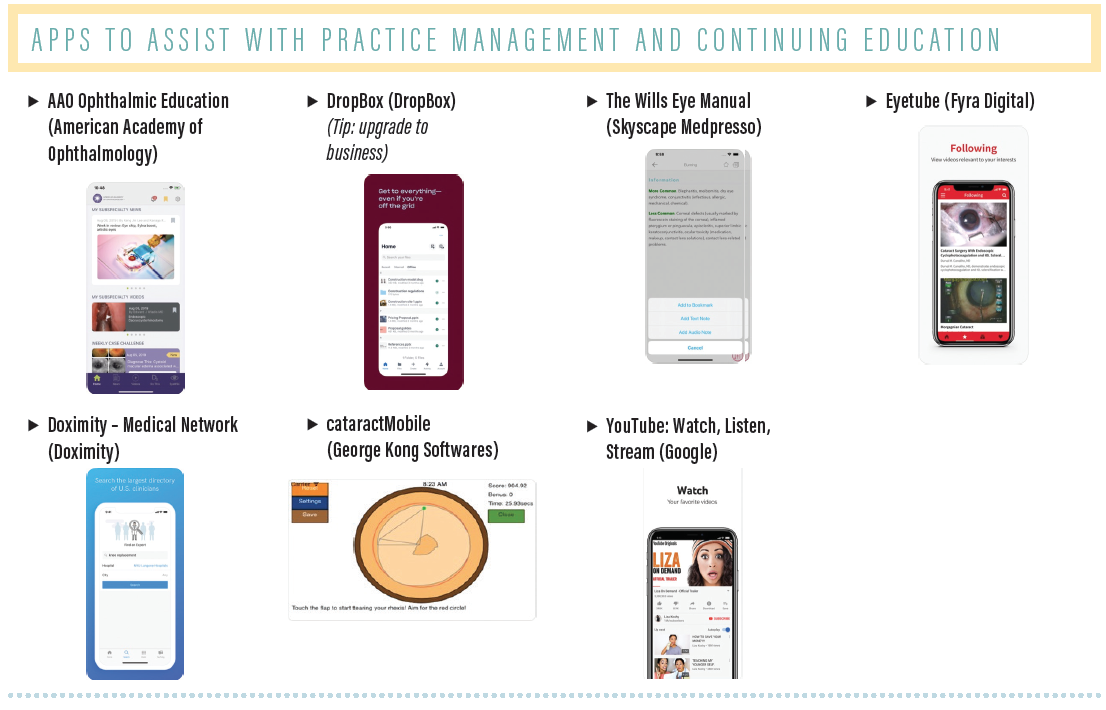
CONCLUSION
Smartphone apps can be extremely useful in daily ophthalmic practice. I encourage you to download these apps and try them out for yourself. I think you will find mobile eye apps can add a new dimension to your practice. The apps described here can help improve efficiency and place a wealth of information, tools, and references at your fingertips to help you to provide the highest quality eye care in the digital age.


